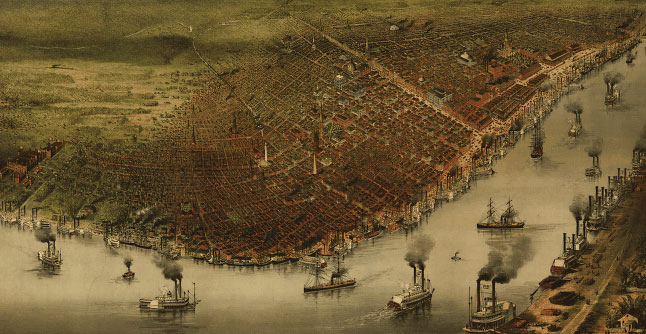Schwarz
View current page
...more recent posts

Monument to the 50th Anniversary of the Founding of the Korean Worker’s Party
On 9-11 the U.S. government faced a terrible decision: Should the military be ordered to shoot down other commercial airplanes full of civilian passengers, so that they, too, would not be used as missiles? Vice President Dick Cheney, although not part of the National Command Authority, gave the orders, although under the Constitution the vice president has no authority to command the military. The 9-11 Commission dealt with this fundamental issue by ignoring it. Among the other 9-11 topics the commission ignored.
On Monday, December 5, the 9-11 Public Discourse Project—a private group formed by 9-11 Commission members after their official mandate lapsed in 2004—held a wrap-up press briefing in Washington, signaling the last gasp of official inquiries into the attacks four years ago. The National Institute of Standards and Technology also recently completed its final report on the twin towers. Already gathering dust are a Federal Emergency Management Agency study, the joint inquiry by Congress, the McKinsey reports on New York City's emergency response, probes by federal inspectors general, and other efforts to resolve the myriad doubts about the hijackings.
Some questions can't be answered: People who lost loved ones will never know exactly how the end came, if it hurt, what the final thoughts and words were. But other questions are more tractable. Here are 10 of them:
1. Where was the "National Command Authority"?
2. Who gave the order to try to shoot the planes down?
3. What exactly were all those firefighters doing in the towers?
4. Did anyone think the towers would collapse?
5. Why was Giuliani's command bunker at ground zero?
6. Why did 7 WTC fall?
7. How did the twin towers fall?
8. How dangerous was—and is—the air at ground zero?
9. What exactly did Zacarias Moussaoui plan to do?
10. What's on those blanked-out pages?
leonardo on-line book review
The Culture of the Copy
Striking Likenesses, Unreasonable Facsimilies
Hillel Schwartz - MIT Press
The Culture of the Copy is an unprecedented attempt to make sense of our Western fascination with replicas, duplicates, and twins. In a work that is breathtaking in both its synthetic and critical achievements, Hillel Schwartz charts the repercussions of our entanglement with copies of all kinds, whose presence alternately sustains and overwhelms us.
Through intriguing, and at times humorous, historical analysis and case studies in contemporary culture, Schwartz investigates most varieties of simulacra, including counterfeits, decoys, mannequins, ditto marks, portraits, genetic cloning, war games, camouflage, instant replays, digital imaging, parrots, photocopies, wax museums, apes, art forgeries, not to mention the very notion of the Real McCoy.
At the same time Schwartz works through a range of modernist, feminist, and postmodern theories about copies and mechanical reproduction, posing the following compelling question: How is it that the ethical dilemmas at the heart of so many fields of endeavor have become inseparable from our pursuit of copies -- of the natural world, or our own creations, indeed our very selves?
The Culture of the Copy is a stunning, innovative blend of microsociology, cultural history, and philosophical reflection that will fascinate anyone concerned with problems of authenticity, identity, and originality.
In the 1880's, Currier & Ives, the printmaking company that was the Google Maps of its day, dispatched an artist to record a panoramic vista of New Orleans. The drawing shows a thriving port city - steamboats, church spires and all - whose populace clung to the elevated areas near the Mississippi.
There were few settlements in the flood-prone lowlands to the north. The swamps to the east were not deemed worthy of illustrating.
It is not easy to broach the idea of such a smaller-scale city. The people here have long defied the perils of this place, whether that meant the yellow fever outbreaks of the 1800's or Hurricane Betsy in 1965.
"New Orleans has survived for 300 years," said Councilwoman Cynthia Hedge-Morrell.
But for much of that time, wasn't the city settled largely on the elevated areas?
"You are underestimating the intelligence of the people of New Orleans," Ms. Hedge-Morrell replied. "They know what they are doing."
Before lawmakers in Washington, D.C., break for Christmas, people in one hurricane-ravaged New Orleans neighborhood want to send them off with a yuletide message -- "We Want to Go Home."Lakeview Civic Improvement Association
In a full-color, full-page advertisement set to run next week in the influential Capitol Hill newspaper Roll Call, a group of Lakeview residents and other New Orleanians hope to impress upon legislators that the effort to rebuild the city's infrastructure and levee system is far from over.
The ad, called "A message from homeless New Orleanians," contains a 570-word message saying they "have lived like refugees in our own country" and are still waiting for members of Congress "to spearhead the rebuilding of our flood protection, and reclaim one of the nation's most important cities from ruin."
It's appalling to think that a book like this may enter classrooms and inflict itself on young minds with little or no acquaintance with art history. So I have a suggestion for parents of high-school students: Find out whether the college that your child hopes to attend plans to assign "Art Since 1900" in its art-history courses. If so, apply elsewhere.the wsj

This is a webpage devoted to listing as many examples of people using shipping containers as architectural elements as I can find, in an effort to embolden people to use containers in building projects, when and where doing so is feasible and appropriate. Be aware that containers are not a perfect building material, since they tend to corrode, but they have been used effectively in some cases, especially in areas near saltwater. This is mainly a links page, and I cannot guarantee anything at all about the sites that I am offering links to, but I try to periodically search for and add links that are fresh and offer something useful and interesting, and I remove bad links and projects where information is incomplete. If you have a site worth adding, or experiences to relate in using containers for building, please contact me.

Shipping Container Housing Guide is a site that came up after we searched the net for shipping containers information and saw that a lot of people and websites are talking about how can you build a house using shipping containers.
Who are we? We're not container specialists, engineers or architects. We're a bunch of young people who love to surf the net and thought that this will be an in interesting idea.
We plan to update periodically the information on this site with articles written by real specialists and with our own thoughts and opinions. We want this site to be your primary source of information regarding shipping container housing.
So the argument has been made that these containers could be turned into shelter for use in emergencies. In light of the recent aftermath of hurricane Katrina, there could actually be immediate need for such shelters. Ideally, the converted containers could be delivered by truck to the actual home sight of the disaster victims. They could live in the shelter on their own land, using the utilities that are already supplied to that lot until their home is rebuilt. The shelters would be preferable to tents because of their steel beam construction. They can endure strong winds, snow and even wildfires.
However, the first step is to get the containers converted. At the moment, there are a few problems that those performing the conversion face. First of all, the containers are only 8 feet wide which doesn't create much room. Cutting away sides and joining 2 containers together can solve this problem. Windows and other holes for utilities have to be cut with a blow torch, requiring specialized labor. So, at the moment, the cost of converting these shipping containers would be prohibitive.
But there is a solution to this problem. Proponents of the idea, including professors, students, nonprofit organizations and some members of the building industry suggest that the containers should be designed so that conversion is possible at some point in the future. They could have removable panels that would not endanger the integrity of the container when it's being used for shipping and could be easily removed when the container is needed in an emergency for shelter. When needed, these containers could then be transported and set up much faster and would be a much more comfortable solution for the victims.
she's about a mover - sir doug 5 and the joan of arch

